You would have a hard time forgetting Croatia (particularly the food!). It’s a divine country. Every aspect of the country persuades you to think so, the architecture, culture, crystal waters, gorgeous nature, and welcoming people.
Read the following article about the best natural attractions in this Mediterranean country and convince yourself why this Balkan country deservedly keeps the title of one of the most amazing places to visit in the world.
Check out the hottest tours right now:
Visiting other Balkan countries? Check out our other nature guides:
14 Natural Wonders In Croatia
Plitvice Lakes National Park
The first destination for you is Plitvice Lakes!
Known for its beauty, this area has always attracted nature lovers, and more than 50 years ago it was declared Croatia’s first national park.
Plitvice Lakes National Park:

Facts And Geography
Croatia’s largest and oldest national park, Plitvice Lakes, enjoys a unique setting. It is located in Croatia’s mountainous region, between the Mala Kapela and the Liska Pljevica mountain ranges.
In addition to being Croatia’s most important natural attraction, the Plitvice Lakes National Park is an outstanding example of the Adriatic hinterland.
It features 16 crystalline lakes which merge with a series of waterfalls and cascades within its densely forested boundaries. Mineral-rich waters wear away the rock and create tufa formations that constantly change.
The mountainous terrain is so scenic that Unesco designated it a World Heritage Site in 1979.
It is good to have a tour guide, that way you can learn more about Plitvice Lakes!
We also thought it would be fair to inform you that this place can get very crowded since it’s one of the most popular natural wonders in Croatia. Don’t say we didn’t warn you.
Best Time To Visit
People said that the best time of the year to visit Plitvice Lakes is in April, May, September, or October.
During the summer, water levels tend to be lower, so waterfalls aren’t as spectacular.
Always wear warm clothes and waterproof shoes when visiting this area because the weather can be a bit unpredictable.
Is Camping Available?
A camp is located 6 kilometers from the entrance to Plitvice Lakes National Park. Up to 2500 campers can stay here, choosing where to park their caravan, trailer, or pitch their tent based on their preference.
How To Get There?
The closest destinations to Plitvice Lakes National Park are Zagreb and Zadar.
From Zagreb: Following the fastest route, it will take you approximately 2.15 hours to drive to Plitvice from Zagreb’s city center. First, take the E65 out of the city, southwest toward Karlovac.
This picturesque road is about 50 kilometers long. You’ll notice signs for exit 3 to Karlovac. Leave the highway there and drive through the center of Karlovac on April Većeslava Holjevca.
From Zadar: This distance is approximately 100 kilometers. Getting from Zadar to Plitvice National Park by car is easy and quick. To reach Plitvice Lakes National Park, take the D1 road from Gornja Ploca, which is the northeast exit of the E71 highway.
Plitvice Lakes National Park Tours
Blue Lake
Blue lake and also its twin lake Red Lake, are one of the most well-known lakes in Croatia.
These natural wonders amaze not only travelers but also geologists who still don’t fully understand the formations of these lakes. It is for that reason that they seem mysterious and so captivating.
Blue Lake:
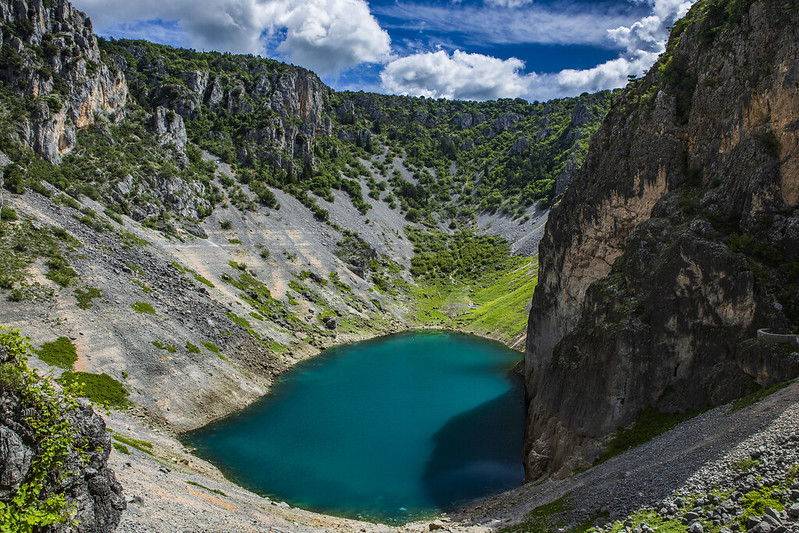
Facts and Geography
The Blue Lake in Croatia is a karst lake located near the town of Imotski.
It lies in a deep sinkhole that may have been caused by the collapse of an enormous cave, like the nearby Red Lake. Despite its size, the Red Lake is the third biggest sinkhole in Europe with a depth of 250 meters.
You won’t want to miss it while you are at Blue Lake since it is only half a kilometer away.
Unlike the Blue Lake, you cannot swim in the Red Lake, nor can you reach it without high-quality mountaineering gear.
https://www.instagram.com/enjoytheview_fromcroatia/?hl=en
Water in the Blue Lake varies seasonally but the hole is approximately 220 meters from the upper rim. In spring, when the snow from surrounding mountains melts, the water can reach 90 meters.
As a result of its geomorphic structures and karstic characteristics, Blue Lake is prone to drying out. Fortunately, this happens rarely.
During the dry season, we met a local who told us that soccer is played at the bottom of the lake.
Best Time To Visit
When the snow melts in the spring and the underwater streams begin to fill again, the beautiful blue-green karst lake reaches its peak water volume. It is a popular swimming spot and many tourists come here especially for the high cliffs from which you can plunge into the refreshing water.
Having mentioned that the water varies significantly during each season, it is best to visit Blue Lake in spring or early summer. Later in the summer and autumn, the lake has much less water.
Is Camping Available?
Blue Lake’s vicinity offers many camping sites. A landscape such as this offers an unforgettable experience and enjoyment for those who adore wild nature, or in other words, direktors.
How To Get There?
Split is the closest larger city to Imotski. From there you take the A1 expressway and you will need to exit at Zagvozd. The town of Imotski can be reached via road D76. The road is good and it’s quite easy to arrive there.
Blue Lake is only 10 minutes of walking from the town of Imotski. Access to the place is also possible by car.
A bit harder part of the road is reaching the bottom of the lake, due to the steep terrain. It takes about half an hour to get there and it requires attention because of the bumpy road.
Mljet National Park
Mljet has a very peaceful and tranquil atmosphere. Despite it being so close to Dubrovnik, we would say Mljet is not a tourist-commercial attraction.
Mljet National Park:
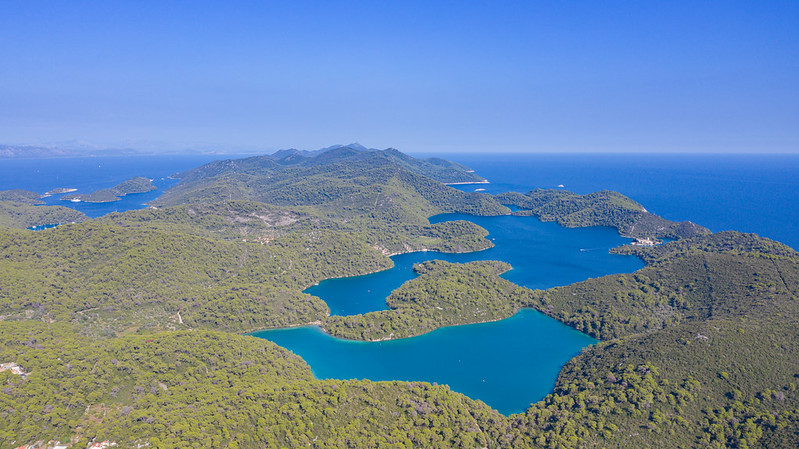
Facts and Geography
This is the most significant protected area of Dalmatia, located on the island of the same name.
The park cover occupies the western part of the island, which is renowned for its lush and varied Mediterranean vegetation, making it one of the most stunning in the Adriatic.
There are two deep bays in the park, the Great Lake and the Small Lake, which are named so, because of the extremely narrow links they have with the sea.
As well as its cultural heritage, Mljet boasts the best-preserved Benedictine monastery complex in the world dating back to the 12th century. The monastery is situated on a small island in the middle of the Great Lake, surrounded by a park. A monastery within an island on a lake situated on an island in the middle of the Adriatic! Adriatic Inception at its finest! Leonardo would be proud (but without an oscar)!
Best Time To Visit
Mljet is best to be visited between May and June and between September and October. Compared to July and August, when vacationers flock to the island for the summer, these are the less crowded months. There is also milder weather than in July and August, making it ideal for any outdoor activity including swimming, hiking, and diving.
Is Camping Available?
There are many campsites in Mljet that provide the highest standards of accommodation, including electricity, parking, a kitchen, and many more amenities.
Mljet’s dreamy and lovely natural surroundings make it an ideal place for camping.
How To Get There?
You can get to National Park Mljet by a ferry from Dubrovnik and by numerous tourist charter boats from the towns Korčula, Hvar, and Split. Ferries that dock at Sobra, the island’s main port, are also available; however, you will need a car from there to get to Mljet National Park.
Mljet National Park Tours
Krka National Park
Dalmatia’s Krka National Park lies about 10 km from Sibenik.
It is named after the Krka River and encompasses nearly 142 square kilometers. There are many waterfalls within the park, including the spectacular Skradinski Buk falls.
It is a good idea to take a boat tour through the parks if you want to experience the best views.
https://www.instagram.com/outdoors.croatia/?hl=en
However, we noticed a few downsides.
Sadly, since 2021, you can not swim anymore in the waterfalls.
Another downside is that the tickets are a bit expensive, they cost almost €30 per person.
But, from the moment you step off the coach, you are struck by the beauty of the place, every twist and turn of the trail reveals new sights to wonder at, from majestic cascades to picturesque woodland ponds and covered glades.
Skradinski Buk
Skradinski Buk waterfall is the longest waterfall on the Krka River and one of the most beautiful natural wonders in this country.
Various travertine barriers and islands form the cascades.
With the help of a network of paths and bridges, you can observe the falls throughout the entire year.
On the Skradinski Buk, you can also see renovated water mills, rolling mills, and washing columns that have been using the river’s power for a long time.
Lokrum Island
The lovely island of Lokrum is very close to Dubrovnik. It is visible from the Old Town Walls. Taking an afternoon break from the chaos of Dubrovnik? Lokrum is the place for that.
Rich vegetation covers the island as well as plants that are specially imported. Lokrum was purchased by the Austrian archduke Maximilian I in 1858, and much of the botanical plant life is a result of his grand gardens.
https://www.instagram.com/croatia_sunsets/
Lokrum derives from the Latin word “acrumen”, which means “sour fruit”, and has its origins in the tradition of the Benedictine monks introducing exotic species to the island they cultivated from around the globe.
Some of the attractions you can see here are the Monastery, Charlotte’s Well, and Fort Royal.
You should know that you can’t spend the night on this island, it is forbidden! Unless you know someone that knows someone. Which we don’t!
“Lionhearted” Lokrum
According to a legend, Richard the Lion-Heart shipwrecked near Lokrum on his way back from the crusades in 1192.
If he survived (so he claims), he planned to build two churches, one on the island where he was stranded, and the other in England.
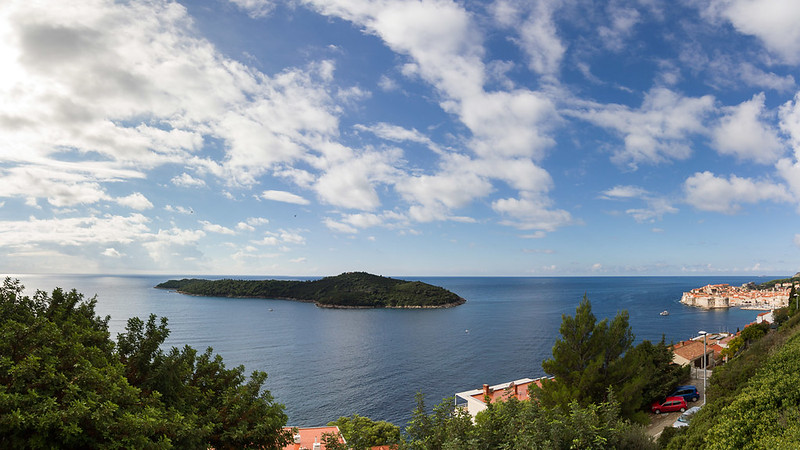
Ultimately the church was built in the city instead. Why not?
Krka National Park Tours
Pakleni Islands
There are 18 islands in the Pakleni Archipelago and they are located near Hvar Island.
https://www.instagram.com/croatiatravelinfo/?hl=en
They are frequently mistakenly called Hell’s Islands since the Croatian word for hell is “Pakao”.
We would recommend you rent a boat for a day and take a look at the following islands.
Island Galesnik
Galesnik Island is just across from Hvar Harbour and is a great spot to escape the busy city.
We went here for a swim in the late afternoon and watched the sunset from the restaurant afterward.
The food is delicious (as always) traditional Croatian dishes all the way.
Island Marinkovac
The beach club on Stipanska bay is the highlight of Marinkovac. Mlini and colorful Ždrilca are located on the island’s other end.
There are some nice restaurants here, but we were too full to eat anything (we rarely are).
Island Saint Klement
This is the biggest island in the Pakleni Islands archipelago.
Here you can find very beautiful and less crowded beaches.
Island Jerolim
Known as the Nudist island!
Cafes and restaurants are full even during the day. Nobody works yet everyone makes money! True direktors.
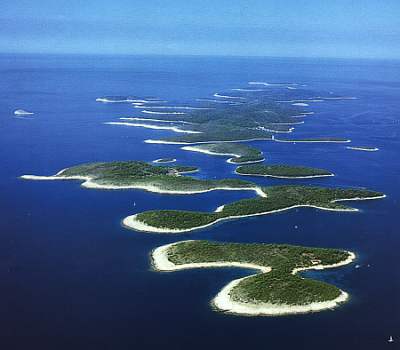
Pakleni Islands Tours
Kamenjak National Park
On the southern tip of the Istria peninsula lies Kamenjak. It is legally protected as a natural landscape.
The island of Istria has many rare and native species of plants and animals. Kamenjak National Park has paths carved out by fossilized dinosaur footprints.
This National Park offers many activities like hiking, swimming, windsurfing, scuba diving.

Kamenjak National Park Tours
Blue Cave
Blue Cave is located on the island of Bisevo. The cave is very famous because of the phenomenon that occurs when the conditions are right.
When the sun hits the sea surface through a natural opening in the roof of the arched chamber, its interior lights up in stunning turquoise.
From 1884, a narrow entrance allowed passage only when the sea was calm because the cave was originally only accessible by diving.
Within the sphere, every drop emits its unique color.
This cave stands out from the rest of the most beautiful caves in Europe because of the inexplicable interaction of colors and lights.
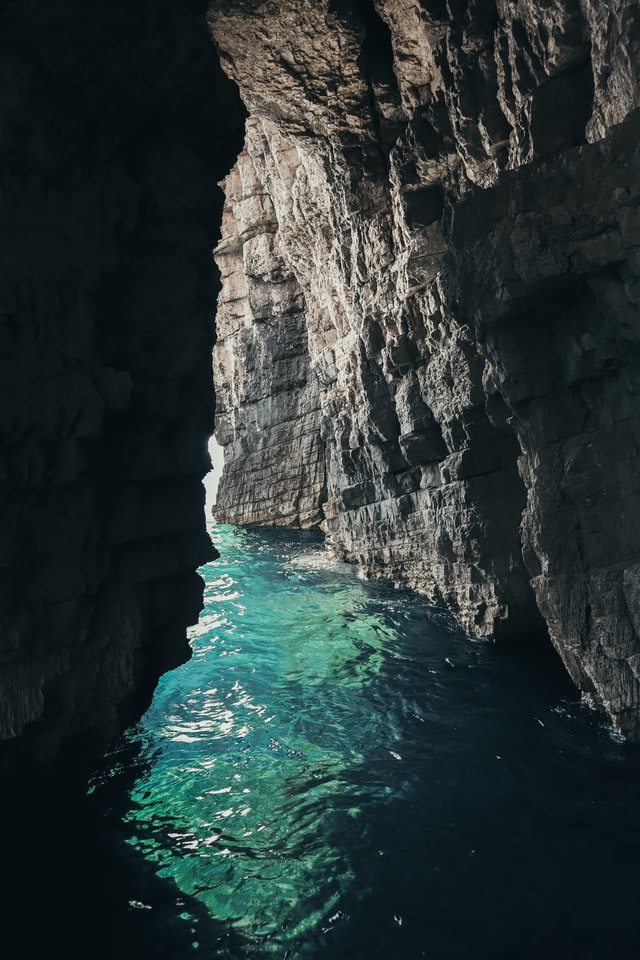
Blue Cave Tours
Vidova Gora
A stunning view overlooks the Adriatic Sea from the highest point on the island of Brač, Vidova Gora.
It is situated along the southern coast of Brač.
The highlands cover more than half of the island, are uninhabited and deserted, with the few larger settlements located along the coasts.
There are several places on Brač where white marble is extracted and processed, which is noted internationally.
This is a must for mountain lovers!
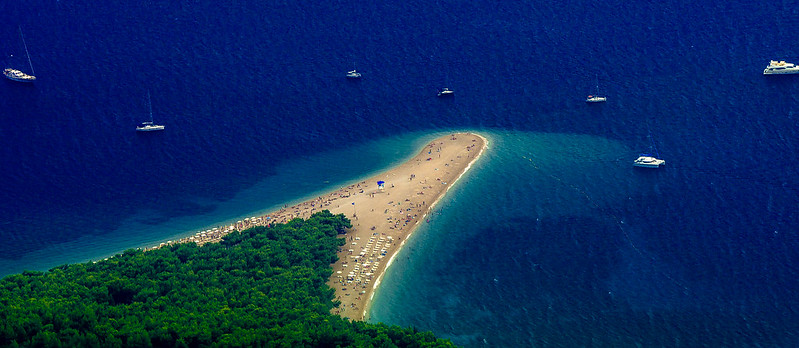
Zlatni Rat Beach (Golden Horn)
Zlatni rat is a paradise beach that is on the Croatian coastline and represents Bol on a large scale.
It was formed when fine pebbles accumulated as sediment around the underwater reef, spreading more than 500 meters into the sea.
https://www.instagram.com/croatia/?hl=en
Winds, waves, and sea currents constantly change the shape of the Zlatni rat’s very tip, causing it to appear constantly new and intriguing.
Surfers can enjoy this protected natural area. There is 2 kilometers distance between Bol and Zlatni rat beach.

Zlatni Rat Beach Tours
Glavas Source
The Cetina River rises from this reservoir called Glavas. Flowing 101 km to the Adriatic Sea, it rises at Milasevo, 7 km north of Vrlika, near the village Cetina.
Dalmatia’s most water-rich river.
Croatia’s Cetina river has a deep source exceeding 150 meters. The source looks like an eye. This is heaven for photographers, it is one of the most picturesque places in this country.
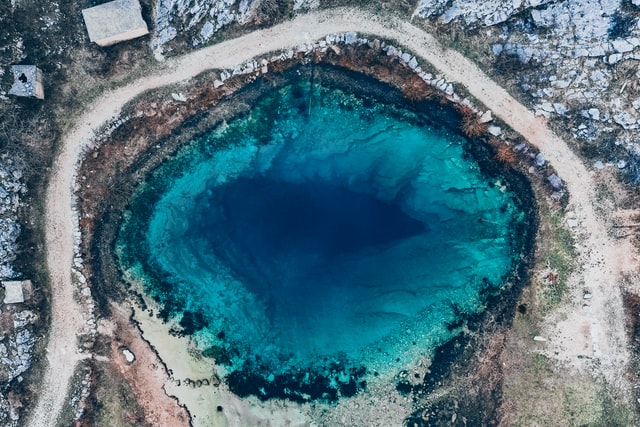
Galesnjak Lake
Also known as the island of love because of its heart-shaped form. This is one of very few naturally occurring heart-shaped objects.
Galešnjak is uninhabited. It does not have any tourist facilities or any sort of man-made structures. All it has are shrubs upon its rather rocky terrain.
Plans are underway to develop it, but nothing concrete has been put in place. However, it is this wild, untamed atmosphere that appeals to most lovers.
The island is isolated, quiet, and private. It is the perfect spot to enjoy a bro moment uninterrupted.
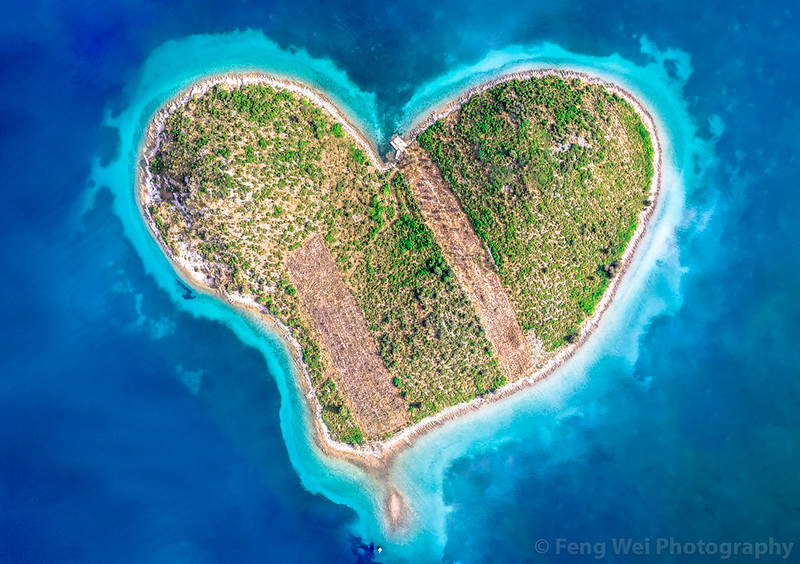
Kornati National Park
89 uninhabited islands, islets, and reefs make National Park Kornati. Among the Mediterranean island groups, this is the most indented one.
Located in the northern part of Dalmatia, southwest of Zadar, the park covers an area of 320 square kilometers.
There are no such places in the world for anyone who is looking for untouched natural splendor and a tranquil, sunny labyrinth of seas, islands, and beaches.

Kornati National Park Tours
Wrapping Up On Croatia Nature
Croatia has 1246 islands, which you might not be aware of? By the number of islands, Croatia ranks 22nd in the world.
There are probably too many to mention all of them, but we tried to include some of the most famous ones, like Lokrum, Galesnik, Marinkovac, and Jerolim.
Overall, Croatia has left us with the impression that it is one of the best summer destinations in Europe. It seemed exotic even though it is in the Mediterranean Region.
Natural beauty in Croatia knows no bounds!
Last Words
Is this article something you enjoyed reading? It would be great if you could share it with others.
Please let us know if there are any natural treasures we missed in our Croatian nature guide.
We would recommend these similar articles too:
- https://direktorium.org/40-balkan-waterfalls-to-visit/
- Via Dinarica Hiking Guide
- https://direktorium.org/29-balkan-mountain-huts/
- https://direktorium.org/44-balkan-based-historical-sites-to-visit/
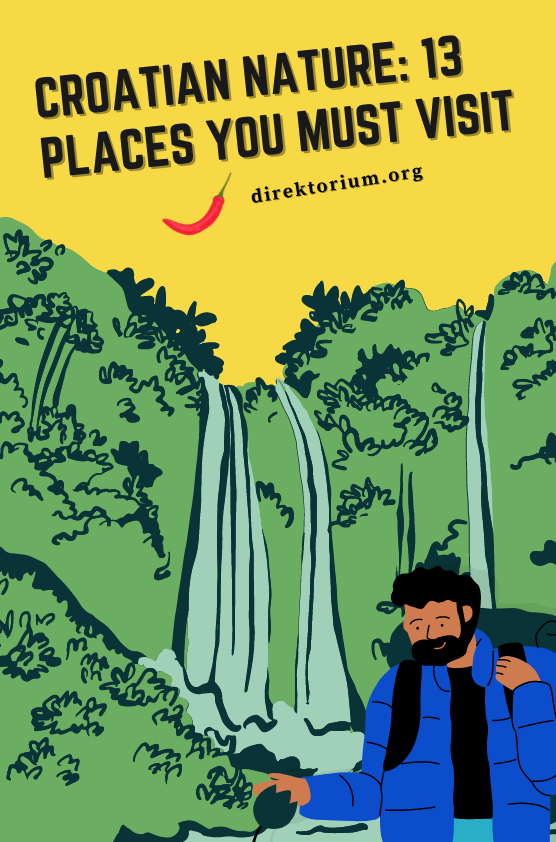

Avid travelers, passionate fishermen, and all-around great guys to hang out with (therefore the reason why they are the ones traveling around and not the rest of us, introverts and repulsive individuals). When not writing about their latest trip or catch, they drink beer, play the synth and call their friends to unpurposefully annoy them. A lot.